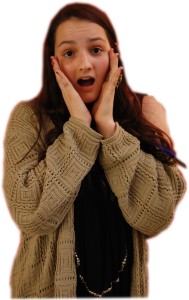According to the National Institute of Mental Health, between 8.7 percent and 18.1 percent of Americans suffer from a phobia. Hence, it appears that East students may want to re-evaluate the true meaning of a phobia, as 87 percent of 157 surveyed East students claim to have at least one phobia. In fact, of the 136 students who allegedly have at least one phobia, 75 percent have two or more phobias.
Medicinenet.com defines a phobia as the unrelenting fear of a situation or activity that causes one to go to great lengths to avoid it, in which common symptoms include shortness of breath, accelerated heart rate, dizziness, hot or cold flashes, stomach distress and panic attacks to name a few.
However, when asked to list the symptoms of their phobia, most East students, like Kevin Gorenberg (’13), wrote “I get nervous.”
Only 30 students out of the 136 who claim to have at least one phobia had one symptom that directly correlated to one of the medically determined phobia symptoms. And, just o

ne of those students, Melissa Pliskin (’13), wrote that she has prescribed medication for her phobia.
Phobias are proven to run in families, or to be triggered by life events, often during one’s childhood. But out of the students who have at least one phobia, 56 percent of them checked that no one in their family shares the same phobia. Additionally, a mere 21 students, who have at least one phobia, wrote that a specific childhood event triggered their phobia.
Kellar Moore (’12), who checked that he suffers from arachnophobia (fear of spiders), wrote, “I thought I had a hair on my eye but it was a spider when I was nine.”
Coinciding with the most common phobia in America, according to buzzle.com, 41 percent of the 157 surveyed East students checked that they have arachnophobia, making it the most common phobia of East students; acrophobia (fear of heights) with 30 percent and ophidiophobia (fear of snakes) with 27 percent. However, the survey also revealed a substantial number of rather outlandish phobias, all of which contain only one student that has the particular phobia, such as bananaphobia (fear of bananas), pediophobia (fear of dolls) and eisoptrophobia (fear of mirrors).
“I have a slight fear of mirrors. This fear only acts up if I have seen a scary movie or something of the sort. If I am in front of a mirror, I feel that I have to keep my focus on the mirror. If I look away, I feel like something evil will be in the mirror that wasn’t there before,” wrote Dan McDevitt (’12), who suffers from eisoptrophobia.
Medically defined as a serious adversity to an individual’s daily life, a phobia is much more dramatic than a petty fear. Though East students may be fearful of some of nature’s creations, it only took 157 students to imply that not only do most of the surveyed students not suffer from medically defined phobia symptoms, but that many students lack the scientific understanding of what a phobia truly is.

